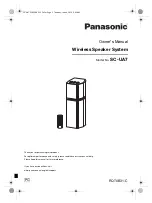
Principles of Operation
TCAS791
3-4
Pilot’s Guide
Audio Inhibit, GPWS
If your aircraft has a Ground Proximity Warning System (GPWS) and a
GPWS alarm occurs, the TCAS791 will sense the alarm and delay the
aural “traffic, traffic” component of any TAs issued during the GPWS alarm
until the alarm clears.
TA Symbol Duration
The TA symbol remains on screen for a minimum of 8 seconds even if the
intruder aircraft no longer meets the TA criteria as long as the TCAS791
continues to track the aircraft.
No-Bearing TAs
Intruder aircraft detected only with the omnidirectional antenna will not
be displayed unless they become TA’s. The omnidirectional antenna does
not detect the bearing of intruder aircraft. The TCAS791 tracks the in-
truder, but without bearing, it can’t display a traffic symbol. If the intruder
aircraft eventually meets the TA criteria, the no-bearing TA message pro-
vides a vehicle for display of the intruder aircraft.
Other Factors That Affect the Display of Traffic Symbols
This section lists factors that affect the display of traffic symbols otherwise
defined in table 2-1.
Ground Target Filtering
Ground target filtering reduces the clutter of visual symbols and aural an-
nouncements that would otherwise be generated for intruder aircraft that
are typically present on or near the ground near airports. This section de-
fines ground target filtering and when it’s used.
Definition
Ground target filtering prevents the issuing of Traffic Advisories (TAs),
Proximity Advisories (PAs), and other traffic symbols for intruder air-
craft determined to be below 380 ft AGL.
When It’s Used
The TCAS791 uses ground target filtering only if your aircraft has a
radio altimeter and you’re below 1,700 ft AGL.
Interference Limiting
To assure that all interference effects from active TCAS I equipment are
kept to a minimum, the FAA requires TCAS equipment to “interference
limit,” i.e. reduce its transmit power, when it is operating in congested
airspace. This limiting function is based on the number of TCAS interro-
gators detected via mode S broadcast reception and the reply rate of your
transponder. Interference limiting reduces the effective surveillance range
of the TCAS equipment and is independent of the display range selected;
therefore, selecting a display range of 20 nmi does not guarantee a 20 nmi
surveillance range when operating in high density areas.












































